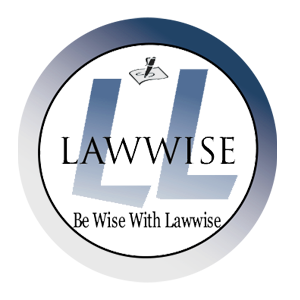LAWWISE - Be wise with lawwise
Lawwise - Be wise with lawwise
Trademark Registration

Table of Contents
Introduction to Trademark Registration
Trademark registration is a legal process that provides exclusive rights to the owner of a trademark, protecting it from unauthorized use by others. A trademark can be a word, phrase, symbol, design, or a combination thereof that distinguishes the goods or services of one entity from those of others in the marketplace. Registering a trademark not only safeguards the brand identity but also enhances its value and recognition in the market.
Importance of Trademark Registration
- Exclusive Rights: Grants the owner exclusive rights to use the trademark in connection with the goods or services it represents.
- Brand Protection: Protects the brand identity from infringement and unauthorized use by competitors.
- Legal Recourse: Provides legal grounds to take action against infringers and counterfeiters.
- Market Recognition: Enhances brand recognition and reputation among consumers.
- Asset Value: Trademarks can be valuable assets, contributing to the overall value of the business.
- Global Protection: Trademark registration can be extended internationally through international treaties and agreements.
Types of Trademarks
- Word Mark: Consists of words, letters, or numerals, such as brand names or slogans.
- Logo Mark: Includes designs, symbols, graphics, or a combination of elements that represent the brand visually.
- Combination Mark: Incorporates both words and a logo, providing dual protection to the brand.
- Sound Mark: Represents a sound, such as a jingle or a distinctive sound associated with a product or service.
- Three-Dimensional Mark: Represents the shape or packaging of goods, providing a unique visual identity.
- Non-Traditional Marks: Includes color marks, scent marks, and motion marks, among others.
Benefits of Trademark Registration
- Exclusive Use: Prevents others from using a similar mark in connection with similar goods or services.
- Consumer Trust: Builds consumer trust and loyalty by ensuring consistency and authenticity of the brand.
- Market Expansion: Facilitates market expansion by protecting the brand in new geographical markets.
- Value Creation: Enhances the market value of the brand and its associated goodwill.
- Licensing Opportunities: Enables the owner to license the trademark to third parties for royalties.
- Legal Protection: Provides a legal basis for initiating legal proceedings against infringers and counterfeiters.
Steps to Register a Trademark
Trademark Search:
- Identify Unique Mark: Choose a distinctive mark that is not similar to existing trademarks in the same class of goods or services.
- Search Database: Conduct a comprehensive search in the trademark database to ensure the chosen mark is available for registration.
Trademark Application:
- Prepare Application: Complete the trademark application form with accurate details of the applicant and the trademark.
- Classify Goods/Services: Specify the goods or services associated with the trademark by selecting the appropriate class(es) from the International Classification of Goods and Services.
- Upload Documents: Attach documents such as a specimen of the trademark (if applicable) and proof of claim to ownership (if prior use is claimed).
Filing the Application:
- Online Application: File the trademark application electronically through the official website of the trademark registry.
- Physical Filing: Alternatively, submit a physical application at the trademark office along with the requisite documents.
Examination and Publication:
- Examination: The trademark office examines the application to ensure compliance with legal requirements and uniqueness criteria.
- Objections: Address any objections raised by the trademark examiner regarding the application or conflicts with existing trademarks.
- Publication: If no objections are raised, the trademark application is published in the trademark journal for public scrutiny.
Opposition Period:
- Public Notice: The published trademark application allows third parties to oppose the registration within a specified period (usually 3 months).
- Response to Opposition: Respond to any oppositions filed by third parties with valid grounds for opposition.
Registration and Certificate:
- Registration: If no opposition is received or successfully defended, the trademark is registered, and a registration certificate is issued.
- Term of Protection: Trademark registration is valid for 10 years from the date of application and can be renewed indefinitely for successive periods of 10 years.
Post-Registration Compliance:
- Trademark Renewal: Renew the trademark registration before the expiry date to maintain protection.
- Trademark Watch: Monitor the marketplace for potential infringements and take necessary legal action if infringement is detected.
- Trademark Licensing: Enter into licensing agreements with third parties for authorized use of the trademark.
- Trademark Assignment: Transfer ownership of the trademark through assignment agreements.
International Trademark Protection
- Madrid System: File for international trademark protection through the Madrid System, which facilitates the registration of trademarks in multiple countries with a single application.
- Regional Systems: Utilize regional trademark systems, such as the European Union Intellectual Property Office (EUIPO) for EU member states, for streamlined protection across specific regions.
Conclusion
Trademark registration is a fundamental step for businesses seeking to protect their brand identity and market presence. By securing exclusive rights to a trademark, businesses safeguard their brand against unauthorized use, build consumer trust, and enhance market recognition. The process of trademark registration involves conducting a thorough trademark search, preparing and filing the application, responding to objections or oppositions, and obtaining the registration certificate.
For effective trademark registration and compliance, businesses should consider seeking professional assistance from trademark attorneys or agents with expertise in trademark law and registration procedures. With proper registration and ongoing vigilance, businesses can leverage their trademarks as valuable assets and maintain their competitive edge in the marketplace.
Call us
We’ll respond to your inquiry as soon as possible.
Email Us
We’ll respond to your inquiry as soon as possible.
Live chat
We’ll respond to your inquiry as soon as possible.
How Lawwise works !

Initial Consultation and Assessment
We begin by understanding your business's characteristics & needs and legal provisions through a detailed consultation.

Commitment to Client Satisfaction
Our transparent processes, timely updates, and dedicated support team ensure a positive and stress-free experience for all our clients.

Customized Solution Design
Based on the initial assessment, we prepare customized solutions that address your thorough business challenges.

Ongoing Support and Advisory
Our team is always available to answer your questions, provide updates, and assist with any ongoing compliance needs, ensuring your business remains compliant and operates smoothly.
Achievements By Lawwise
Happy Customers
Startups registered.
Trademarks registered.
Years of Experience
What our Client say about Lawwise



